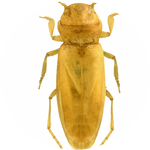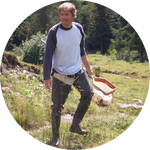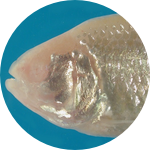About This Project
My undergraduate student Sonya Royzenblat and I will track the well being of the cave beetle Ptomaphagus hirtus at different ambient temperatures to determine the temperature range at which this species can be cultured most efficiently. Besides boosting our studies of its enigmatic visual system in the lab, this insight will help to understand its dispersal limits in the cave environment, and to predict possible changes in response to global warming.
Ask the Scientists
Join The DiscussionWhat is the context of this research?
P. hirtus is a highly cave adapted small carrion beetle which populates the vast subterranean world of Mammoth Cave and some nearby caves in Kentucky. Found exclusively in cave passages, this flightless species was considered blind for over a century. It was thus a great surprise that genetic studies in my lab revealed that these beetles possess a small but functional visual system (Friedrich et al. 2011). Since then, we have cultured P. hirtus in a dedicated cave lab to study the development and function of its unique visual system. Ongoing studies explore the cellular organization of its highly regressed eyes, the visual sensitivity of P. hirtus in light vs dark choice test, and the possibility that light can entrain a daily activity rhythm. Click HERE to find out more!
What is the significance of this project?
The development from egg to adult takes close to three months for P. hirtus. This is typical for cave adapted animals but extraordinary when compared to conventional animal model systems like fruit flies which develop in little more than a week. We hypothesize that P. hirtus reproduction and development can be accelerated by culturing at temperatures higher than 11 degrees Celsius, which we currently maintain to mimic its natural cave environment as closely as possible. Determining the temperature range in which P. hirtus thrives will also yield insights into dispersal limits of P. hirtus in the vast passage systems of the Mammoth Cave region and allow predictions about the effect of future environmental temperature changes, such as global warming, to be made.
What are the goals of the project?
Short-term temperature tolerance:
In a pilot series of experiments, we will determine the upper and lower bounds of P. hirtus temperature tolerance as the temperature range with no detectable, immediate negative impact on adult and larval survival as well as egg laying rate.
Long-term temperature tolerance:
In a second series of experiments, we will determine the temperature range for the optimal culturing of P. hirtus. In these trials, we will monitor the vitals of tester populations for up to six months at different temperatures to capture long-term effects on population health and growth.
Check out the Methods area for more details.
Budget
I am fundraising to facilitate the purchase of a Low Temperature Incubator that will allow us to perform the temperature controlled culturing experiments. In the long term, this incubator will be used to culture P. hirtus at the optimal temperature that our study will determine. This equipment will complement the trusty but rusty cold chamber we are currently using for the routine culturing 11 degrees Celsius. The latter temperature is the maximum temperature the cold chamber can be set at. This limitation prevents us from exploring the likely more effective higher temperature range.
Endorsed by
Meet the Team
Markus Friedrich
My interest in insects became obvious early on when I started culturing moth and butterfly caterpillars in my room as a boy. This, as it turns out, was the beginning of a career in comparative biology with a focus on insects, their eyes, their genomes, and genes:
https://sites.google.com/site/...
My lab explores the phylogenetic history as well as the developmental evolution of the Drosophila visual system integrating molecular phylogenetics, comparative development and genomic approaches. Our animal models include the red flour beetle Tribolium castaneum and, as of most recently, the small carrion cave beetle Ptomaphagus hirtus.
Additional Information
Project Backers
- 109Backers
- 118%Funded
- $4,722Total Donations
- $42.93Average Donation






